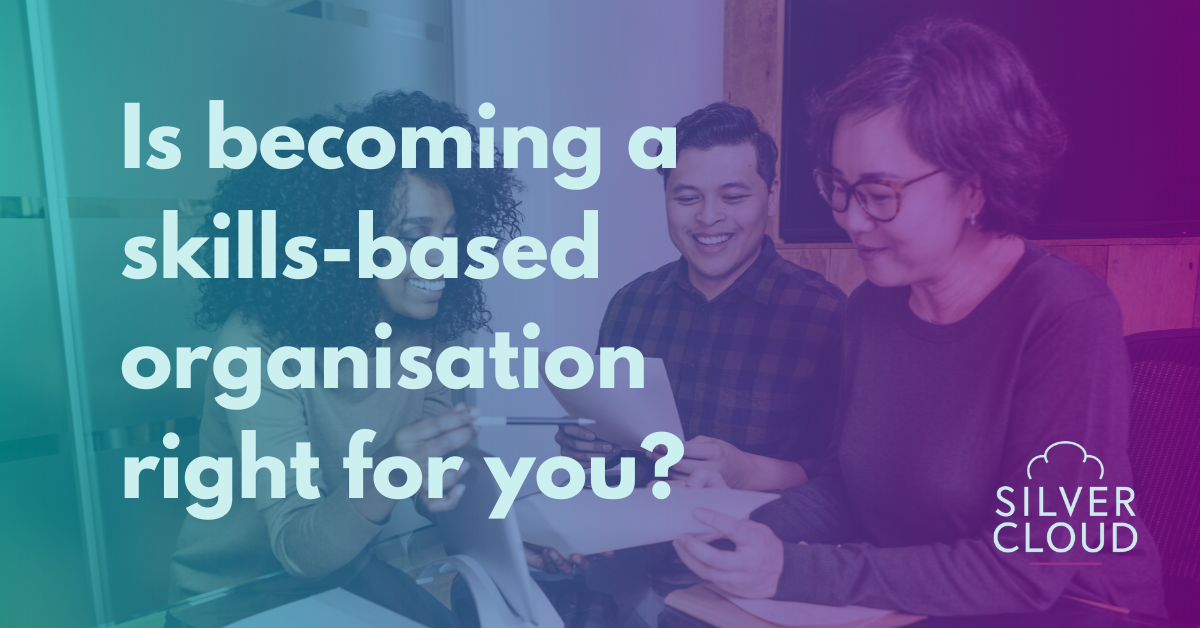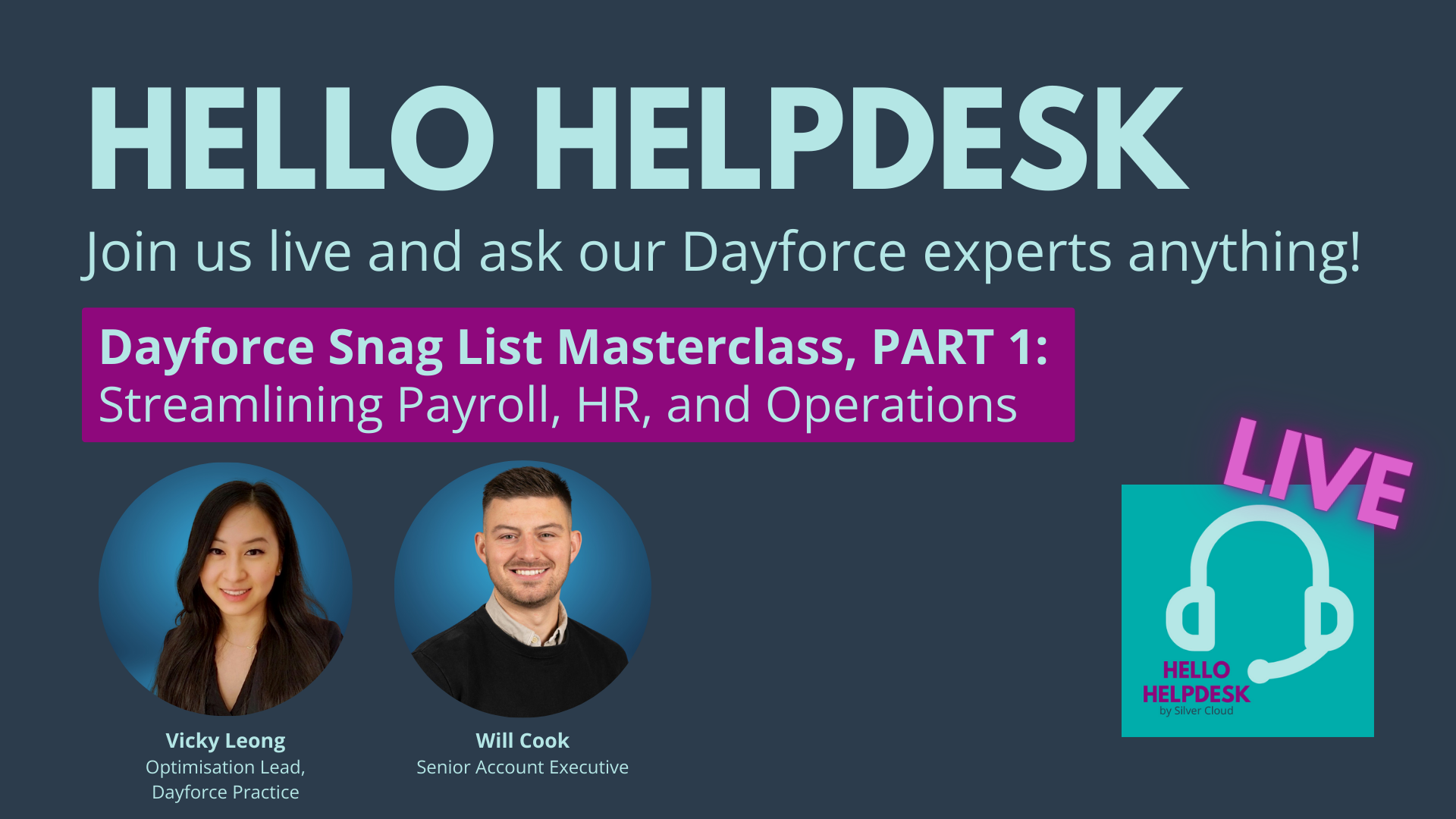What to include in an HRIS Business Case | Silver Cloud HR
by Silver Cloud

The benefits of new HR technology that can digitise many of your most ‘repetitive’ tasks are plentiful: increased productivity, reduced costs, regulatory compliance, and a more fulfilling working environment, to name just a few. But, unless you can bring these benefits to life in a compelling HRIS Business Case a way that relates to your business, your plans may never get off the ground.
So, how do make your HRIS business case watertight?
The key is to pitch your case not just from a HR viewpoint, but as one that focuses on wider business benefits.
You’ll need to demonstrate how HR systems with good workflow capability can automate a lot of time-consuming administrative tasks across the business, saving time and money in the process. But first, you’ll need to be very clear what the current picture is.
An evidence-based business case
The latest HR business systems are intuitive and have a broad range of metrics that are instantly accessible so that reporting becomes seamless. For now though, you will need to collect data on your current position to be able to make an evidence-based case.

You might already have a strong inkling as to where savings could be found or new management insights created. Use this knowledge as a starting point, but do keep in mind that your data will likely be inherently bias.
As part of your assessment, you’ll want to calculate the man-hours that could be saved in the entering, reconciling and searching for data throughout your organisation.
A good exercise is to ask yourself if any of the following are not automated in your organisation. If not, they should be:
- Email notifications of new starters or leavers
- Notifications of calendar-based activities (e.g. probation reviews and auto-enrolment into the company pension scheme)
- The creation and sign-off on contracts of employment
- The collation of new starter information
- Entering data (e.g. timesheets)
- Report creation
- Integrating or exporting general ledger information into the finance system from the payroll system
Once you have an idea of where time could be saved, you’ll need to thoroughly consider what employees could be doing in the time you will free-up.
Make use of compelling case examples
You won’t want to detail every example in your business case, but you’ll want to be ready with some strong case studies you can place some facts to.
The moment someone is typing data into two places, your organisation should be asking “is there a better way to do this?”.
Just as an example, in a professional services organisation or corporate environment, how often do managers decline holiday requests? Not very often. Yet, we have built systems that require managerial approval for every single holiday request when they have probably already had a conversation about it.
Consider for a moment, just how much time would be saved and trust gained if an employee could log their holiday and be prompted by an email asking them “have you checked this with your line-manager?”. They click ‘yes’ and their manager simply receives an email notification.
This may not be an issue for your organisation, but you will have dozens of examples of rule-based tasks that could be automated.
Take leavers, as another example. There’s a lot of administration involved in processing a person’s departure, but much of this information can be automated. As soon as a date has been agreed, a series of emails can be triggered so that the relevant teams are informed. Finance will be informed a week before to give them enough time to pay expenses, facilities the week before that so they know they have a work station available and IT a couple of days before so that they can deactivate systems.
Better still, if your HR system is integrated with finance and payroll, there’s no need for any manual effort whatsoever. As soon as a leaving date is entered into the HR system, it feeds directly through to a finance system that automatically deactivates an account.
Getting the right team in place
It’s crucial to get the right people involved in building your HRIS business case. That usually means senior management from within finance, operations, IT, and customer service.

They’ll all have slightly different priorities, and will need you to pin-point where the proposed technology is going to be of direct benefit to them, as the CIPD points out:
“Non-HR functions require encouragement to increase the use of people data in their practice and for long-term decision making”
Your IT team will have specific concerns and you’ll want to work through these ahead of drafting your business case. You’ll need to be able to come to agreement about the fundamentals.
- Is it a Cloud-based solution? And what third party APIs will you need to consider?
- What implications will it have for other departments; for instance, payroll and customer services?
- Who will have overall responsibility for data protection and migration?
- When will software updates take place and who is responsible for making sure they happen?
- Once live, how is the data backed up?
- Is the system flexible enough to grow with your business?
- Will any training be required across the business?
- Does the system come with any support back up?
Finance, on the other hand, will focus on the numbers and the ROI of any new HRIS. They’ll want a thorough analysis of the current operating costs minus the potential future operating costs of your chosen automated HR system.
You’ll also want to present what is the cost of keeping the same system, making sure you align this with projected business growth. Build a monthly picture of the costs incurred by continuing to operate with the current systems.
Accuracy will be incredibly important here. Refer back to the inefficiencies you identified at the beginning of your business case and allocate monetary values to these in a P&L format.
Provide a detailed summary of the investment required to support its implementation, including up-front and ongoing costs.
Greater management insight
Proving the impact on the HR department is relatively straight-forward. HR AI and automation are now seen as a very effective way of freeing up HR professionals from the more mundane repetitive tasks that can be automated.
To demonstrate the significance of the value to the business as a whole though, you’ll need to be clear how streamlining the HR department enables invaluable business insights.
After all, the ability of HRIS to provide greater management insight is one of the key drivers in moving HR up the value chain. For example, show managers how you’ll be able to mobilise teams faster and identify potential issues before they become a problem.
If your organisation is going through a period of rapid growth, show them how technology will uncover high performers who can be deployed in high-growth areas of the business.
As leading cloud-based HR solutions company, Oracle, points out in its HR Transformation Digibook:
“Your people need to be able to collaborate easily. Managers must build and reshape teams quickly. Talent locked in functional silos will leave or be wasted”
The case for data compliance
Protecting your people data is incredibly important. Post-GDPR, we are all much more aware of the consequences that any data-breach can have upon a business. The fines, reputational damage, and impact on employees of a data breach can have huge consequences for the business.
As guardians of employee personal data, your business case needs to show how your organisation will be better able to respond to queries quickly and effectively and take the necessary action. You’ll also need to show statutory compliance with Right to Work and Gender Pay Reporting.
The good news is that this is all achievable with an intuitive HR system that holds data securely in one place.
Calculating ROI
It is important to back up each aspect of your business case with some tangible numbers to show how you will get a return on investment.
You may wish to use this calculator which has been put together to help you with some of the most common calculations used in an HRIS business case, including HR to employee ratio, onboarding and reporting savings.



